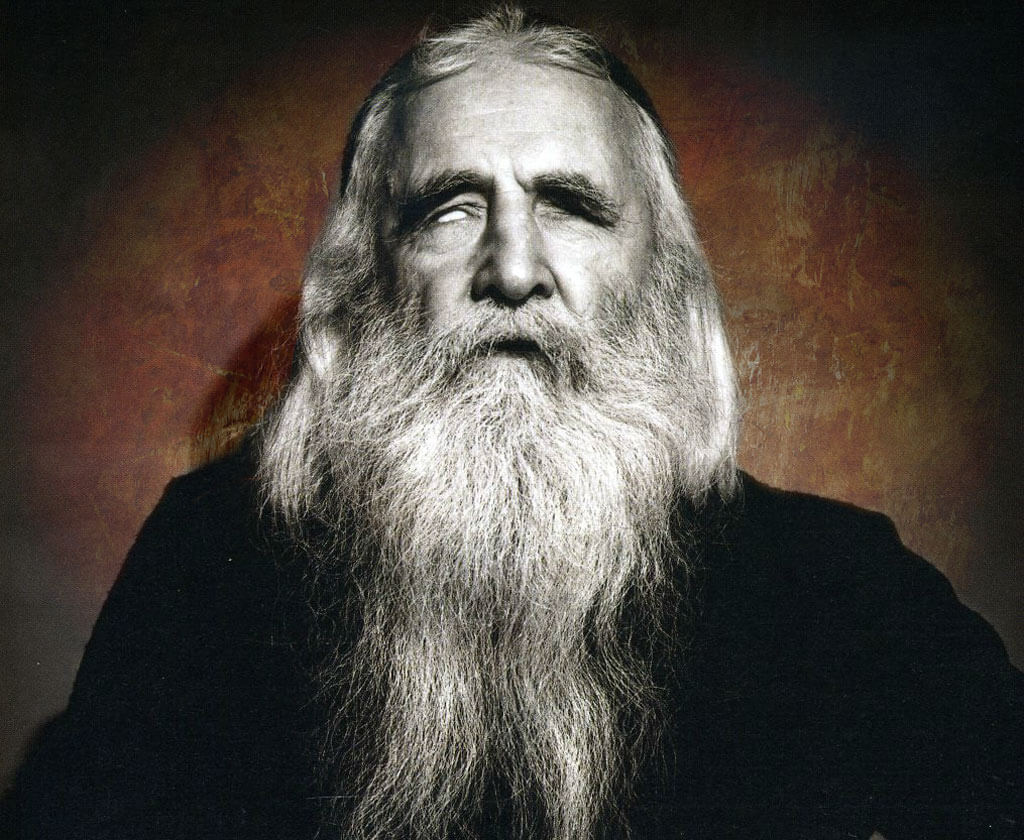
On September 8th, 1999, New York City lost one of its most striking artistic minds. Louis Thomas Hardin, most popularly known as Moondog, was a composer, street musician, poet and visual figure in New York City’s downtown arts scene. Nicknamed “The Viking of 6th Avenue”, Moondog was known to many for his imposing height, flowing beard and hair, and most striking, his full-bodied Viking regalia complete with spear and horned helmet. Unknown to many New York City residents, Moondog had an exceptional career as a composer and recording artist where he brushed elbows with Leonard Bernstein, Arturo Toscanini, Steve Reich, Philip Glass and many others.
Originally born in Kansas in 1916, Moondog was injured in a farm accident that caused him to lose his eyesight. The tragedy ended up being a blessing in disguise, as Hardin was able to study music seriously in a number of schools for the visually impaired, supported by scholarships. In 1943, Hardin moved to New York City, where he began a decades-long career as a street musician.
Despite common misconceptions, Moondog was rarely, if ever, homeless. In fact, the composer owned several acres of land in upstate New York, which he would occasionally visit when he gathered enough funds from his poetry and music. Often, Moondog was faced with the choice of paying a copyist to write down his compositions, or spending the night off the streets in a hotel room.
Moondog cracked the mainstream classical sphere after several encounters with the superstitious conductor of the New York Philharmonic, Artur Rodziński, who was drawn to Moondog’s Christ-like appearance (Moondog, increasingly annoyed by this comparison, would later don his classic Viking garb to better contextualize his long, flowing hair and beard). Rodziński allowed Moondog to sit in several rehearsals with the New York Philharmonic, which began a series of creative relationships with New York’s best musicians, including jazz and orchestral players, and most oddly, Julie Andrews and Martyn Green, who released an album of children’s songs with Moondog in 1957. Despite these mainstream successes, Moondog remained primarily a street musician from the late 40’s until his move to Germany in 1974.
At last, Torontonians have a chance to witness Moondog’s legacy, as the Music Gallery will produce a concert of his music, Moondog 100, in celebration of his birth year centennial. Percussionist Russell Hartenberger, a featured musician in the Moondog 100 concert, recalls running into Moondog on the streets of New York City in 1971 while rehearsing with Steve Reich.
“One day when I happened to be in New York in the afternoon, Steve [Reich] said we should go to midtown and meet Moondog. I didn’t know about Moondog at the time, but Steve seemed to know him. We went to the corner of 54th and Sixth Avenue where Moondog was standing dressed in his Nordic robe and helmet, holding a staff of some kind, talking with passersby.”
Hartenberger, who is writing a book about Reich’s music, hypothesizes that many composers of this era were influenced by the older street musician’s rhythmic, repetitive and tonally oriented music.
“Later, I discovered that Steve Reich, Philip Glass, and Jon Gibson recorded several of Moondog’s compositions together. Gibson and Glass played the flute; Moondog played his homemade trimba, and they all sang.”
Despite these interactions with New York’s classical establishment, Moondog, and his music remained outside the box. “Moondog was a unique musical personality at a time when society, in general, was in flux”, Hartenberger says. “His choices in his personal lifestyle reflected his strong views about many things, including music. His compositions are tuneful and usually with a regular pulse. They have charm and sometimes feel naive in their simplicity. His pieces are usually fairly short, and his songs use his own poetry for the lyrics.”
Popping on a Moondog record reveals a collision of popular and classical influences: big band, bebop, quirky Harry Nilsson-esque pop tunes, and a heavy emphasis on musical canons and counterpoint, a debt to Moondog’s interest in the music of J.S. Bach. A tuneful accessibility lies at the core of Moondog’s music- a result of his years spent busking on the street, where music must catch the ear of anyone who happens to walk past. Despite this, Moondog’s passion lay in his composed music rather than his busking tunes.
The full gamut of Moondog’s compositional legacy will be on display on December 3rd at the Music Gallery, in a concert which features Hartenberger’s percussion quartet NEXUS, vocalist Suba Sankaran, and The Mike Smith Company, as well as visuals by Talwo Odunlami. Details, here.
#LUDWIGVAN
Want more updates on Toronto-centric classical music news and review before anyone else finds out? Follow us on Facebook or Twitter for all the latest.
- PREVIEW | U of T Faculty of Music Brings Salvatore Sciarrino to Toronto - January 27, 2017
- PREVIEW | The Music Gallery Gears Up For The Viking Of 6th Avenue - November 25, 2016
- SCRUTINY | Esprit Orchestra Salutes The Legacy Of R. Murray Schafer - October 28, 2016



